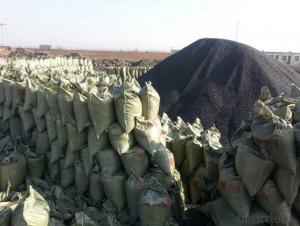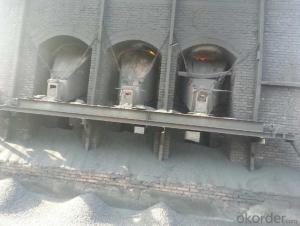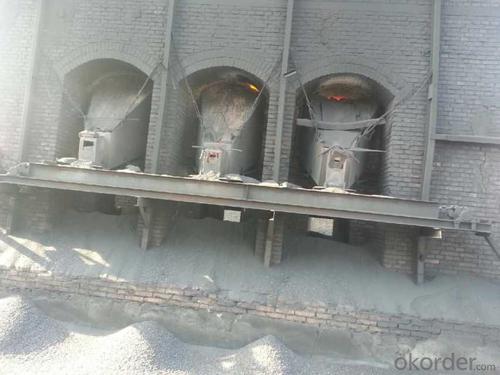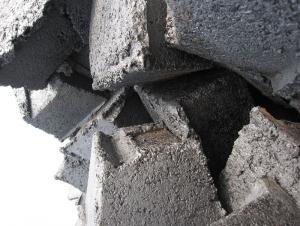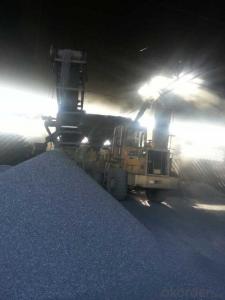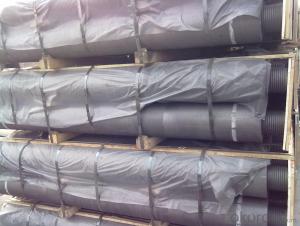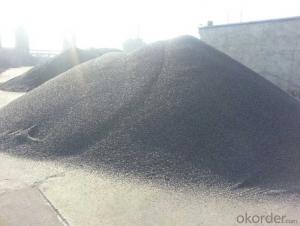Charge Coke FC80-90 with stable quality
- Loading Port:
- Tianjin
- Payment Terms:
- TT OR LC
- Min Order Qty:
- 20 m.t.
- Supply Capability:
- 3000 m.t./month
OKorder Service Pledge
OKorder Financial Service
You Might Also Like
Packaging & Delivery
25kgs/50kgs/1ton per bag or as buyer's request
Specifications
Calcined Anthracite
Fixed carbon: 90%-95%
S: 0.5% max
Size: 0-3. 3-5.3-15 or as request
It used the high quality anthracite as raw materials through high temperature calcined at over 2000 by the DC electric calciner with results in eliminating the moisture and volatile matter from anthracite efficiently, improving the density and the electric conductivity and strengthening the mechanical strength and anti-oxidation. It has good characteristics with low ash, low resistvity, low sulphur, high carbon and high density. It is the best material for high quality carbon products.
Advantage and competitive of caclined anthracite:
1. strong supply capability
2. fast transportation
3. lower and reasonable price for your reference
4.low sulphur, low ash
5.fixed carbon:95% -90%
6..sulphur:lower than 0.3%
General Specification of Calcined Anthracite:
| FC | 80 | 83 | 85 | 88 | 90 |
| ASH | 16 | 14 | 13 | 10 | 8.5 |
| V.M. | 3 | 3 | 2 | 2 | 1.5 |
| S | 0.5 | 0.5 | 0.5 | 0.5 | 0.35 |
| MOISTURE | 2 | 2 | 1 | 1 | 0.5 |
Pictures
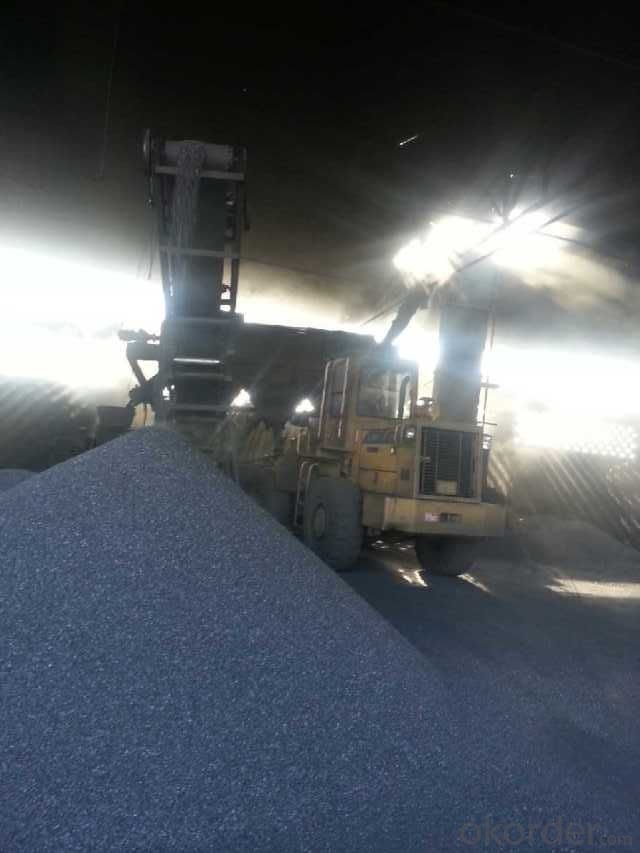
We are also strong at below materials, please contact us if you are interested in any of them:
Calcined Petroleum Coke
Carbon Electrode Paste
Carbon Electrode
- Q: Which is better, 13 and 14 carbon breath tests?
- Two kinds of carbon synthesis conditions are different, the instruments are not the same, so lead to price differences
- Q: Does alumina react with carbon?
- NotThe smelting of Al in industry can only be done by electrolysis. Even at high temperatures, the reducibility of C is not as strong as Al, and the melting point of Al2O3 is very high. At this temperature, C has been gasified
- Q: What are the potential uses of carbon nanomaterials in medicine?
- Carbon nanomaterials have immense potential in medicine due to their unique properties. They can be used for targeted drug delivery, imaging, tissue engineering, and diagnostics. Carbon nanotubes, for example, can transport drugs directly to cancer cells, reducing side effects. Additionally, carbon nanomaterials can provide high-resolution imaging of tissues and organs, aiding in early disease detection. Furthermore, they can be used to create scaffolds for tissue regeneration, promoting the growth of new cells and tissues. Overall, carbon nanomaterials hold great promise for revolutionizing medicine and improving patient outcomes.
- Q: What are the impacts of carbon emissions on indigenous communities?
- Carbon emissions have significant impacts on indigenous communities, not only in terms of their environment but also their culture, health, and overall well-being. One of the most direct consequences is the degradation of their traditional lands and natural resources. Indigenous communities often rely on these resources for their livelihoods, including hunting, fishing, and agriculture. Increased carbon emissions contribute to climate change, leading to changes in temperature, weather patterns, and ecosystems, which can disrupt the delicate balance of their ecosystems and make it more difficult for them to sustain their way of life. The loss of traditional lands and resources can also have profound cultural impacts on indigenous communities. For many indigenous peoples, their connection to the land is deeply rooted in their identity and spirituality. When their lands are degraded or destroyed due to carbon emissions, it can lead to the erosion of their cultural practices, knowledge, and traditions. This loss of cultural heritage not only affects indigenous communities but also the broader global society, as their unique knowledge about sustainable land management and conservation practices can offer valuable insights for addressing climate change and protecting our planet. Furthermore, carbon emissions contribute to air pollution, which can have severe health impacts on indigenous communities. Many indigenous communities are located near industrial facilities or fossil fuel extraction sites, resulting in increased exposure to pollutants such as particulate matter, sulfur dioxide, and nitrogen oxides. These pollutants can cause respiratory illnesses, cardiovascular diseases, and other health issues, disproportionately affecting the most vulnerable members of these communities, including children and the elderly. In addition to the immediate health impacts, the long-term consequences of carbon emissions, such as rising sea levels and extreme weather events, further threaten the existence of indigenous communities. Many indigenous communities inhabit low-lying coastal areas or remote regions that are more susceptible to the effects of climate change, including coastal erosion, flooding, and loss of traditional food sources. These changes not only disrupt their way of life but also force them to consider relocation, which often leads to the loss of their cultural identity and connection to their ancestral lands. Addressing carbon emissions and mitigating climate change is crucial for the well-being and survival of indigenous communities. It requires recognizing their rights to their traditional lands, resources, and self-determination, as well as involving them in decision-making processes concerning environmental conservation. Supporting sustainable development projects that prioritize local needs and indigenous knowledge can help foster resilient communities that can adapt to the changing climate. Ultimately, by reducing carbon emissions and protecting the environment, we can help preserve the cultural diversity and invaluable contributions of indigenous communities for generations to come.
- Q: What kind of industry does high-performance carbon fiber belong to?
- High performance carbon fiber is used in many industries, such as automobiles, bicycles, and even the aviation industry.. If you look at the industry type, many industries have high-performance carbon fiber figure, if divided by the industry attributes, should belong to the emerging industry, the future potential of the industry
- Q: How does deforestation contribute to carbon emissions?
- The role of deforestation in contributing to carbon emissions is significant. When forests are cleared or burned, the carbon stored in trees and vegetation is released into the atmosphere as carbon dioxide (CO2), a greenhouse gas that contributes to global warming. Forests act as natural carbon sinks, absorbing CO2 from the atmosphere through photosynthesis. Trees and plants convert CO2 into oxygen and store the carbon in their trunks, branches, leaves, and roots. This process helps regulate the Earth's climate by reducing the concentration of CO2 in the atmosphere. However, deforestation disrupts this natural carbon storage system. The carbon once stored in trees and vegetation is released back into the atmosphere, increasing the concentration of CO2. Burning forests exacerbates this process, releasing even larger amounts of carbon through the combustion of trees and plant material. The loss of forests also leads to a decrease in biodiversity and the destruction of habitats for numerous species, which disrupts the delicate balance of ecosystems. As a result, these ecosystems become less efficient at absorbing and storing carbon, further contributing to increased carbon emissions. Moreover, deforestation indirectly contributes to carbon emissions through various means. For example, when trees are cleared, the exposed soil is exposed to sunlight and heat, causing it to dry and release stored carbon. Additionally, deforestation often leads to the conversion of land for agricultural purposes, such as livestock farming or palm oil plantations, which can increase methane emissions, another potent greenhouse gas. To summarize, deforestation contributes to carbon emissions by releasing stored carbon, disrupting the natural carbon storage system, and indirectly contributing to the release of other greenhouse gases. It is crucial to address deforestation and promote sustainable land management practices to mitigate the effects of climate change and reduce carbon emissions.
- Q: How does carbon affect the formation of landslides?
- Carbon does not directly affect the formation of landslides. Landslides are primarily triggered by natural factors such as heavy rainfall, earthquakes, or volcanic activity, or by human activities such as deforestation or construction. However, carbon indirectly plays a role in landslides through its impact on the environment. Excessive carbon dioxide (CO2) emissions, primarily caused by human activities such as burning fossil fuels and deforestation, contribute to climate change. Climate change leads to more frequent and intense rainfall events, which can increase the likelihood of landslides. Increased rainfall can saturate the soil, making it heavier and more prone to sliding, especially on steep slopes. Another way carbon can indirectly affect landslides is through deforestation. Trees play a crucial role in stabilizing slopes by anchoring the soil with their root systems. When forests are cleared for agriculture, urbanization, or logging, the loss of tree cover weakens the soil's stability and increases the risk of landslides. Additionally, the removal of vegetation reduces the absorption of rainfall, leading to increased surface runoff and erosion, further destabilizing slopes and making them more susceptible to landslides. In conclusion, while carbon itself does not directly cause landslides, its impact on climate change and deforestation can indirectly contribute to the occurrence and severity of landslides. It is important to address carbon emissions and promote sustainable land management practices to mitigate the risk of landslides and maintain the stability of slopes.
- Q: How is carbon dioxide formed?
- Carbon dioxide is formed through various natural and human activities. It is naturally produced by the respiration of animals, the decay of organic matter, and volcanic eruptions. Additionally, human activities such as the burning of fossil fuels, deforestation, and industrial processes also contribute to the formation of carbon dioxide.
- Q: Made of high strength structural partsThe market quality of the carbon fiber plate is too much, the price is low, do not know how to choose. A knowledgeable friend can introduce larger enterprises? The quality of the carbon fiber board produced must be better and the performance should be stable!
- You are not for the prestressing bar, if you find the building reinforcement for Tianjin Beijing card, if you do the structure reinforcement for Jiangsu and Wuxi via the new material industry, these are relatively well-known.
- Q: There are several allotropes of carbon
- Allotrope of carbon: diamond, graphite, carbon 60 (fullerene), amorphous carbon (charcoal, coke, activated carbon, etc.)
Send your message to us
Charge Coke FC80-90 with stable quality
- Loading Port:
- Tianjin
- Payment Terms:
- TT OR LC
- Min Order Qty:
- 20 m.t.
- Supply Capability:
- 3000 m.t./month
OKorder Service Pledge
OKorder Financial Service
Similar products
Hot products
Hot Searches
Related keywords
